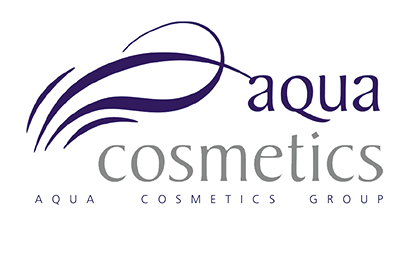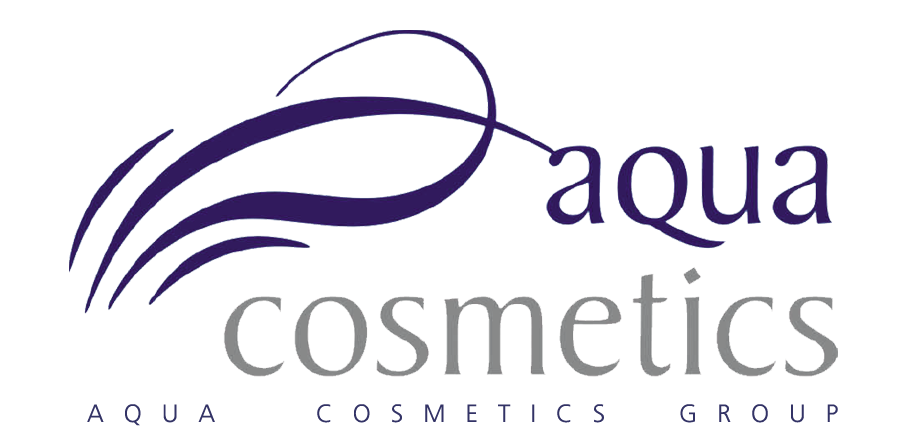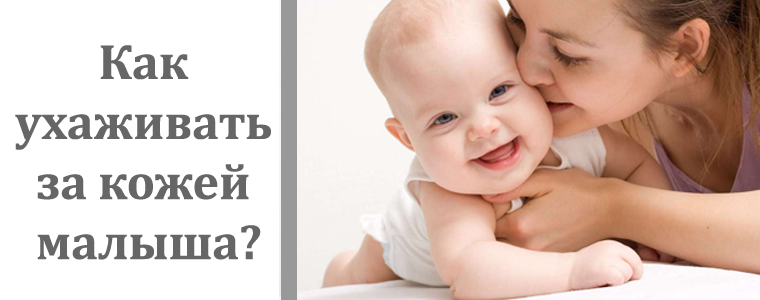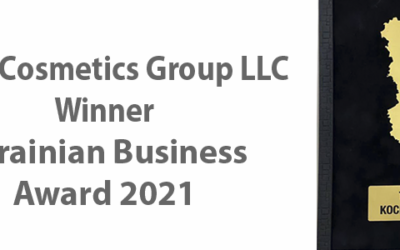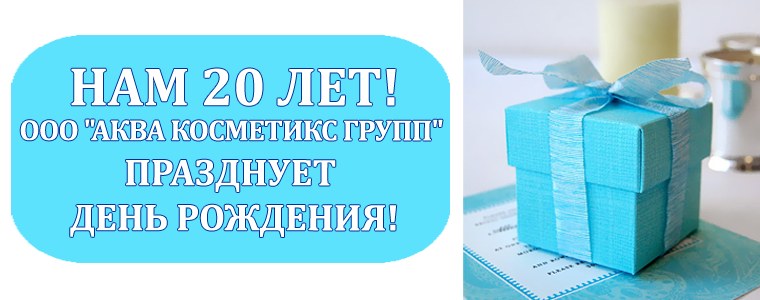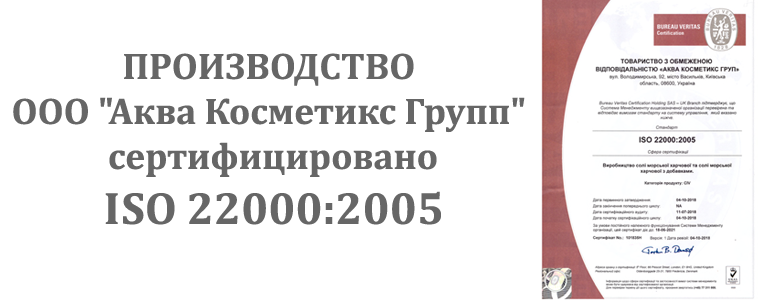How to care for baby’s skin?
Nine months of waiting and now – a miracle happened, the light appeared such a long-awaited baby. Young parents have many questions related to caring for a newborn. Today we will talk about skin care for the baby.
The skin of a baby is significantly different from the skin of an adult, although for a long time it was thought that children are small copies of adults. Immediately after birth, the skin of the baby remains a special damp grease, which protected it from amniotic fluid in the mother’s tummy. It used to be washed off, now it’s proved that it’s best to leave it soaked in the skin. When the grease is absorbed, the mother may notice that the color of the newborn baby’s skin is red. Do not panic, it’s normal, because in the child’s blood, red blood cells are kept in high numbers, and there is also no subcutaneous fat, and the blood vessels are very close to the skin and are clearly visible. Also, a vascular pattern may appear on the skin.
Weak development of subcutaneous fat leads to one more feature of babies – they are quickly supercooled and freezed, and the skin of the bargaining gets a marble look.
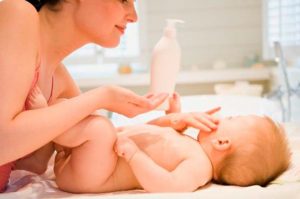
Every mother notices that her baby’s skin is very tender and velvety to the touch. This is due to the fact that the skin is covered with infant fluff, the so-called lanugo. This fluff is already wiped off by 3-5 months. On the 2nd or 3rd day of life, the baby’s skin becomes dry and begins to peel off, thus adapting the baby to the air. Sebaceous glands are just beginning to function and form a protective lipid layer, which helps to retain moisture. During this period it is especially important to moisturize the skin with oil, preferably of vegetable origin – olive or castor, sunflower can also be used. So, for example, oil for the care of toddlers TM “Дочки-сыночки” is a mixture of natural refined oils: sunflower and olive, which makes it possible to naturally take care of the skin and create a slip in the massage. Most often the skin is peeling on the palms and legs of the baby.
Sometimes on the skin you can see small white spots, reminiscent of pimples, it’s milia, they are also called – sebaceous cysts. They pass by themselves, there is no need to do something with them. Also, red inflamed pimples may appear, they are called “flowering.” All this is the result of hormonal reconstruction of a small organism. After separation from the mother, the baby’s body begins to produce its own hormones, which is displayed on the skin. But as you grow up, all these “charms” pass.
Important aspects of baby skin care:
- In order not to injure a child, the nails of adults should be short-cut and filed;
- If an adult has any sores (fungus, wounds, boils), then it is better to take care of the baby’s skin with a healthy person;
- Use only high-quality baby cosmetics.
Washing your baby:
Every morning when the baby wakes up, wash with warm boiled water. It is better to wash your face on a changing table, place all necessary items near it so that it is convenient to get them.
We begin with the washing of the eyes. Cotton ball dipped in boiled water, smooth movements without pressure wipe the eye from the outer corner to the inside. For each eye, we use an individual cotton ball.
Spout the outside with a damp cotton wool ball. From the inside, the nostrils are cleaned with a cotton flagellum, producing rotational movements. Flag is pre-moistened with boiled water. Babies usually do not like this procedure, but it is necessary to cleanse the nose, otherwise it will be hard for them to eat and there may be whims. Ears are processed by flagellum from cotton wool, cleaning off sulfur from the skin of the external auditory canal. Deeply to advance the flagella is not necessary, since the sulfur is not removed, but is pushed inside the ear canal. Clean the ears 2 times a week.
The face and the ears are wiped with a cotton ball. Behind the ears often accumulates milk, which the child regurgitates, it must be cleaned otherwise it will begin to rot, smell bad and disturb the baby. Umbilical wound before healing, no longer treated (like our grandmothers zelenka or peroxide) with her problems do not arise, but you need to ensure that the diaper does not cover the navel and it is not soared. After each chair, the baby should be washed with warm running water.
Capital is true for body care:
1.Bathing a child before healing umbilical wound is carried out in boiled water with the addition of a solution of potassium permanganate. The water should be heated to body temperature or slightly higher (36-37⁰C). Soap can be used not every day, but it is desirable to use a safe, without SLES and SLS, and allergenic fragrances, like liquid soap TM “Дочки-сыночки” containing natural extracts of lemon balm and wheat proteins. Melissa flower extract has calming properties, preventing the appearance of irritations. Wheat proteins – this wheat grain protein is divided into fragments, they are similar to the amino acids of the skin proteins so it is well digested, and moisturizes the skin of the baby.
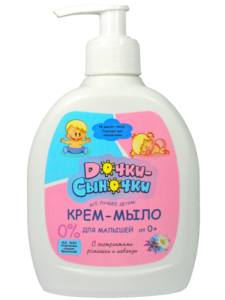
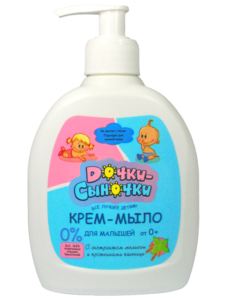
The head is enough to wash 2-3 times a week, for this you can use 2-in-1 shampoo foam for toddlers “От головы до пят” with chamomile and lavender of the same series. It can be used as a shampoo and bath foam for daily bathing. Has a balanced pH level. In case of contact with the eyes, the foam does not irritate the eyes. It is made on the basis of natural components of vegetable origin.
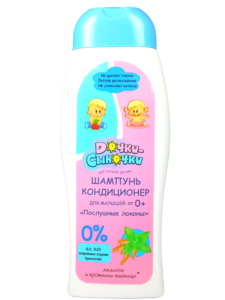
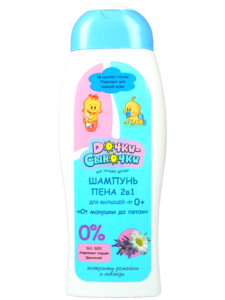
In the water you can periodically add decoctions of herbs. After each bath, the umbilical wound is dabbed with a paper towel so that there is no vodka left.
When the baby turns 6 months into the bath, you can add sea salt with extracts of TM “Дочки-сыночки”.
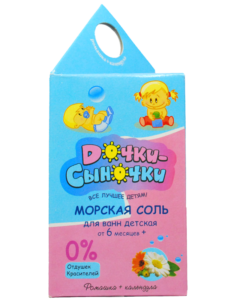
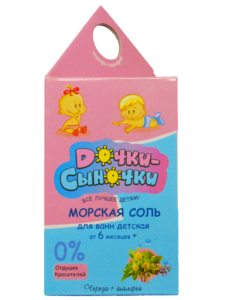
2.Rinse the baby under running water. The child at the same time lies on the mother’s arm with the belly up. The head is located on the elbow bend of the mother’s hand, buttock on the palm, and the baby’s leg should be fixed with the thumb of the hand near the hip joint. All movements are directed from the genitals to the gluteal fold. If the child pokakal, then use soap. This procedure is necessary after each emptying of the intestine, and after 2-3 urination. Such care will avoid diaper rash in the inguinal folds and on the buttocks.
- The use of powder after washing will help to keep the baby’s skin dry, powder coating it from the irritating effect of urine.
- Air baths. The crust is placed on a changing table, completely undressed and allowed to move freely with handles and legs. The duration of the procedure is better to increase gradually from 1 to 2 minutes up to 5-10 minutes.
{:}
